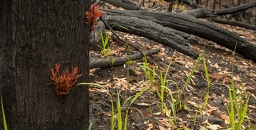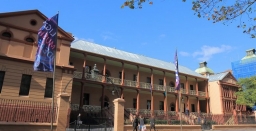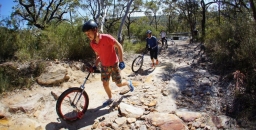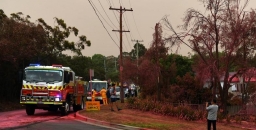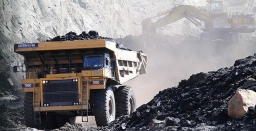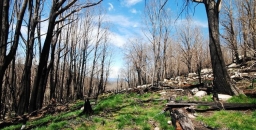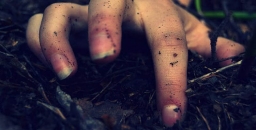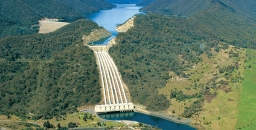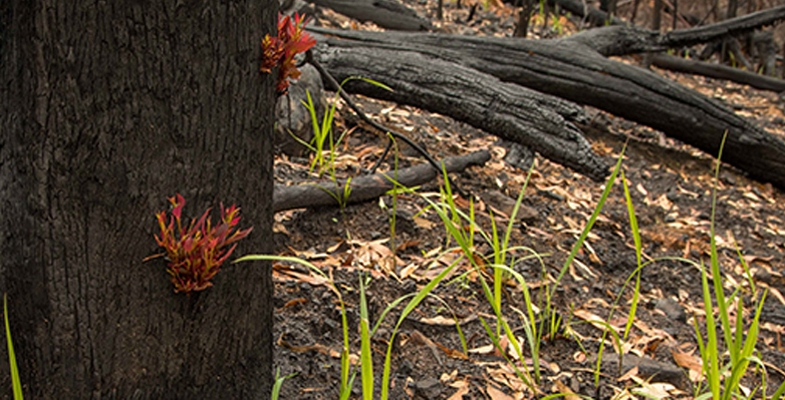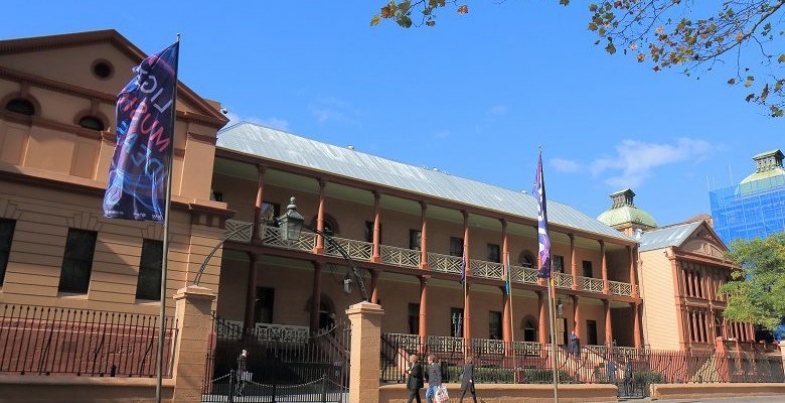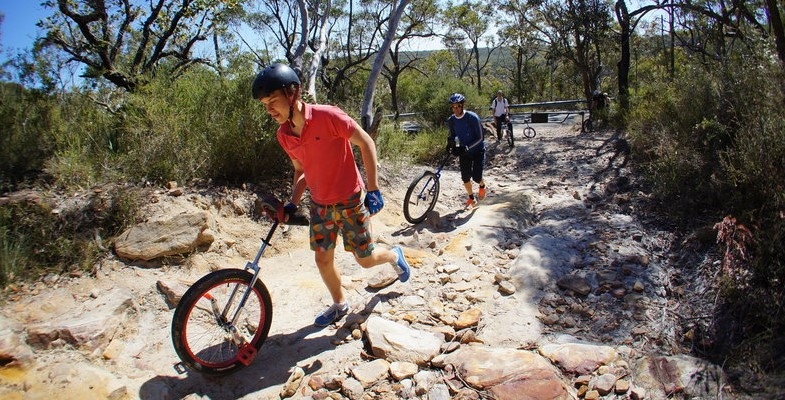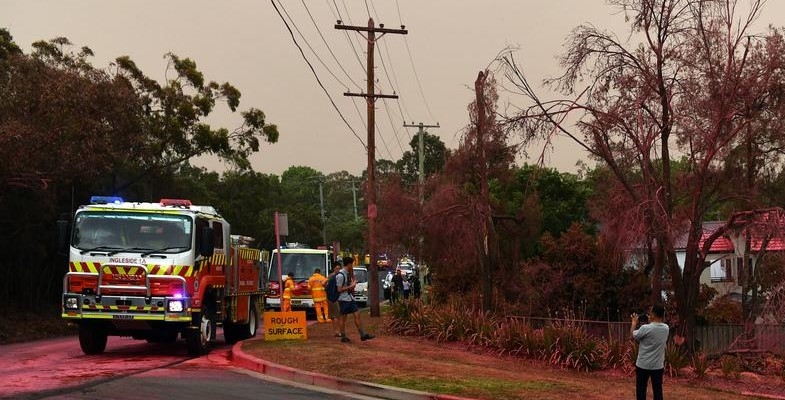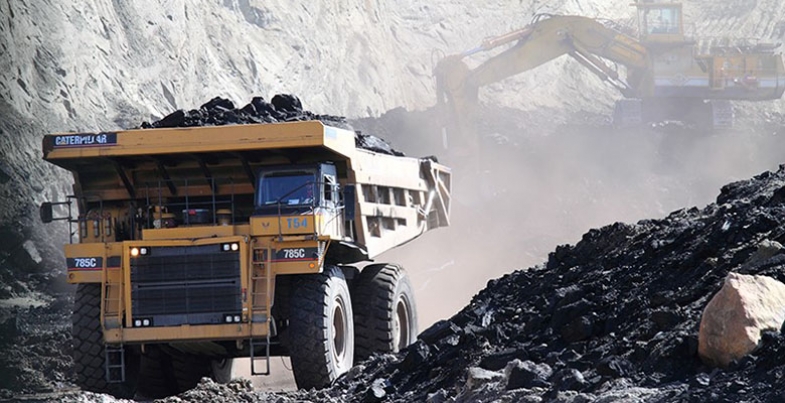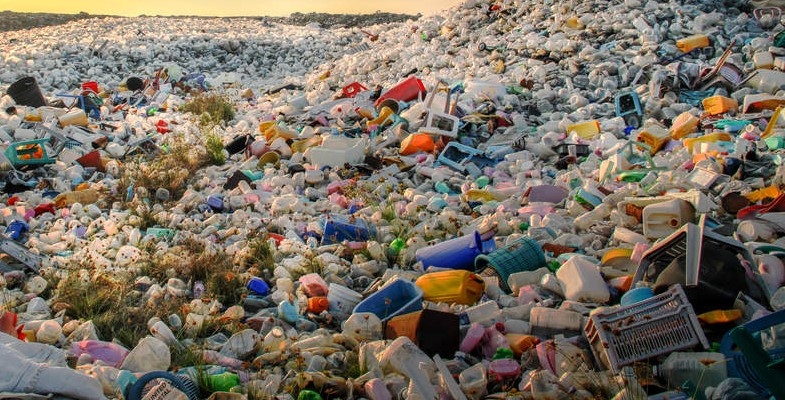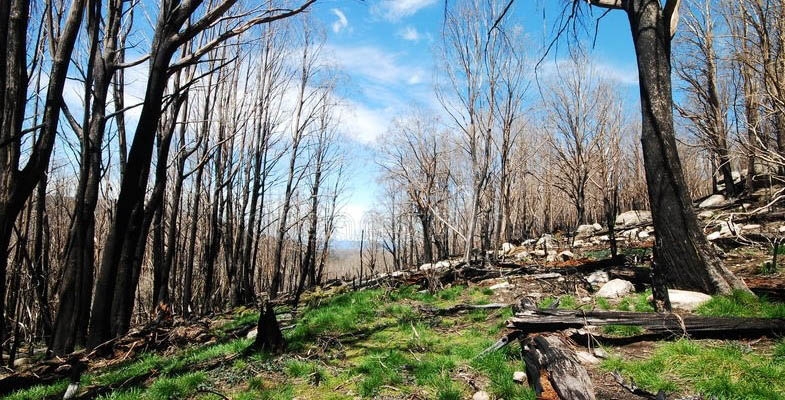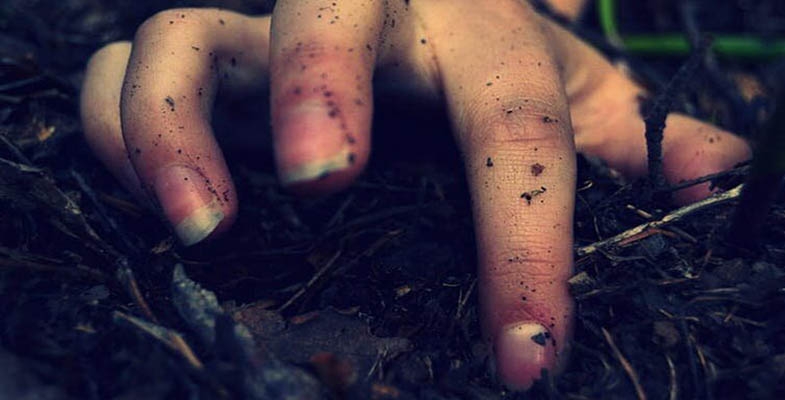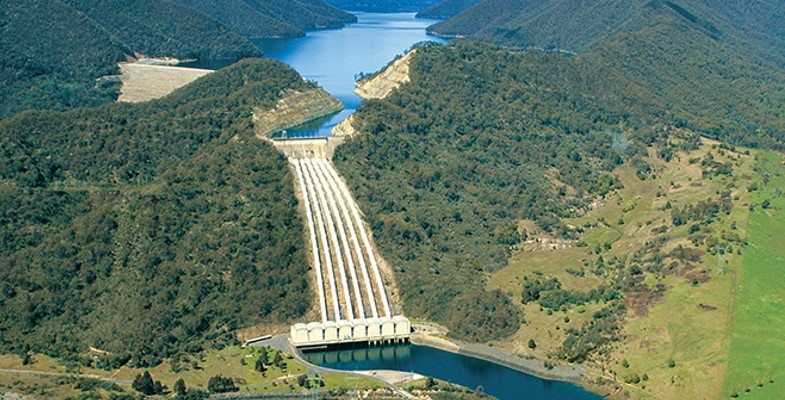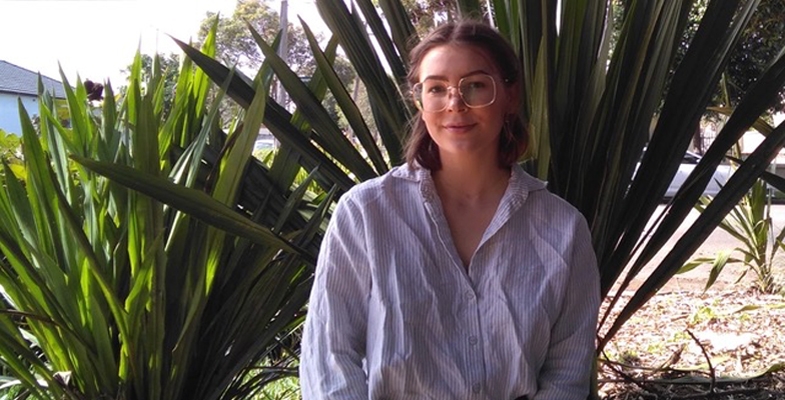STEP Matters 205
- Default
- Title
- Date
- Random
- Considering that we have had to cancel or postpone our walks and talks we decided it is appropriate to take…Read More
- The Australian Association of Bush regenerators (AABR) is cautioning against rushing in to replant burnt areas. They are advocating a…Read More
- The NSW government is not holding sittings in Macquarie Street but decisions are still being made, with most of them…Read More
- This strategy has taken many months to finalise after extensive consultation was undertaken with interested groups, often with competing interests.…Read More
- Sydney escaped the extreme bushfire experiences of last summer but the heatwaves, strong winds and extremely dry bush conditions could…Read More
- Optimistic, prosperous – a country of rare beauty, blessed with abundant natural resources. Australia has all the ‘golden eggs’ ’needed to…Read More
- China decided two years ago to ban the importof plastics for recycling and several SE Asian countries have limited imports.…Read More
- This article is based on recent visits by John Martyn to two different burnt areas, the Blue Mountains and the…Read More
- Many Australians feel compelled to help our damaged wildlife after this season’s terrible bushfires. Suggested actions have included donating money,…Read More
- NPA NSW has released a new research paper that has found that the claimed benefits of the Snowy 2.0 project…Read More
- We are pleased to announce that the John Martyn Research Grant for 2020 has been awarded to Ruby Paroissien. Ruby…Read More
Membership Fees
Considering that we have had to cancel or postpone our walks and talks we decided it is appropriate to take some temporary measures to compensate members.
One year membership fee waive
We’ve credited everyone with one year’s free membership. New members who join before 30 June 2020 will be extended to 30 June 2022.
Lapsed members
We've reinstated recent lapsed members.
Purchase of book or map by non-members
For the rest of 2020 we'll offer the option of one year free family membership to anyone who buys a map or book. This means they'll be entitled to pay the member’s price for the publication.
Donations
We've added a donations button to our website if you ever want to make a tax-deductible donation. Donations help fund our environmental education grants.
AABR’S Post-fire Wildlife Habitat Recovery Response
The Australian Association of Bush regenerators (AABR) is cautioning against rushing in to replant burnt areas. They are advocating a focus of allowing sites to regenerate and for sites where there is a need (and an opportunity) to remove weeds that could worsen if not treated and which would prevent recovery of native habitats.
They are establishing a database of volunteers, skilled and unskilled, AABR members and supporters who might be able to contribute some time to the volunteer effort over the next 6 to 12 months. They are particularly seeking people who provide their expertise to inform under-supported land managers and private landholders in high priority fire-affected areas about post-fire weeding so that they can better secure recovery of faunal habitats.
State Government News
The NSW government is not holding sittings in Macquarie Street but decisions are still being made, with most of them being a continuation of the same disregard for the environment. Here are some examples.
Planning System Acceleration Program
To aid recovery from the economic downturn arising from the COVID-19 pandemic the government has announced a Planning System Acceleration Program which will bring forward planning reforms:
to cut red tape and fast-track assessment processes to boost the construction pipeline and fast-track new projects
Only limited details of the program have been provided and it is proposed that it will include measures:
- to fast-track the assessment of state significant developments, development applications and rezonings, with more decisions to be made by the minister if necessary
- to support councils and planning panels to fast-track locally and regionally significant development applications
- to expand the type of works that can be carried out as a complying development
- to introduce a ‘one stop shop’ for industry to progress projects that may be ‘stuck in the system’
- to appoint additional acting commissioners to help clear the current backlog of merits appeals in the New South Wales Land and Environment Court
The developer lobby group, Urban Taskforce, was asked by Treasury to provide a list of ‘shovel ready’ projects that could be accelerated. STEP has been following two of these candidates closely. They have both been knocked back for good reason.
- The Mirvac plan to build 600 units on the old IBM site in West Pennant Hills that would destroy Blue Gum High Forest and threatened species habitat. The zoning changes required before the detailed DA could be assessed were rejected by the Hills Council for many technical reasons and huge community protest.
- The seniors housing development on Bayview Golf Course proposal that would clear an important wildlife corridor was rejected by the Land and Environment Court. The developer has resubmitted the DA.
Logging in koala and threatened species habitat
It is appalling that the NSW Forestry Corporation is logging in unburnt forests on north coast in some of the depleted habitat for threatened species. This includes areas that conservationists hope will become part of the Great Koala National Park.
Approval to extend longwall mining under Sydney’s water catchment
In March approval was granted for further longwall mining by Peabody Energy at the Metropolitan Mine under the Woronora Dam to provide coal for the Port Kembla steel works. It is claimed by the Planning Department that the mining process has been reviewed by independent experts who:
consider that the proposed mining would not compromise the reservoir – but have recommended a range of precautionary adaptive measures to ensure the mining is carefully monitored.
How can it be possible to manage the damage after subsidence has started causing loss of water from the reservoir into the mine?
In December the government also gave its tick for another longwall expansion at South32's Dendrobium Mine, also within Sydney's catchment. With this one the Avon and Cordeaux Dams are affected.
It has been revealed by the Sydney Morning Herald that WaterNSW is strongly opposed to the project. There is insufficient design to prevent drainage cracks and predicted water loss of as much as 5.2 million litres a day might be an underestimate.
Sydney is the only city in the world to allow mining under its water catchment. A petition with over 10,000 signatures opposing these decisions cannot be debated in parliament in the current circumstances.
NSW climate change policy
There is some good news at the state government level. They and most of the other states are leaving behind the recalcitrant federal government and have announced some real climate change policy.
The Net Zero Plan: 2020–30 is to reduce emissions by 35% below 2005 levels by 2030. This is more ambitious than the federal commitment to reduce emissions by 26-28%. The plan is part of the pathway aiming for zero emissions by 2050.
The plan recognises the situation that jobs will be created and business will save money by using low emission technologies. The government will spend almost $2 billion in a series of programs.
The programs include support for electric vehicle charging infrastructure, electricity demand reduction via building codes, creation of renewable energy zones that will create jobs in regional areas and a fund to support manufacturers to install low emissions equipment and farmers to lower emissions and take advantage of carbon offset programs.
Raising the Warragamba Dam Wall
The government seems determined to proceed with the plan to raise the Warragamba Dam wall by 14 metres. The project is currently undergoing research for a final EIS. It has been reported that the species mapping that was carried out before the fires was rushed with timeframes that would make it impossible to properly identify species numbers.
The area in the Blue Mountains World Heritage Area that would be affected by flooding after the dam wall is raised has been badly affected by the bushfires. No appraisal is being done of the impact of the fires.
Ku-ring-gai Council's Recreation in Natural Areas Strategy
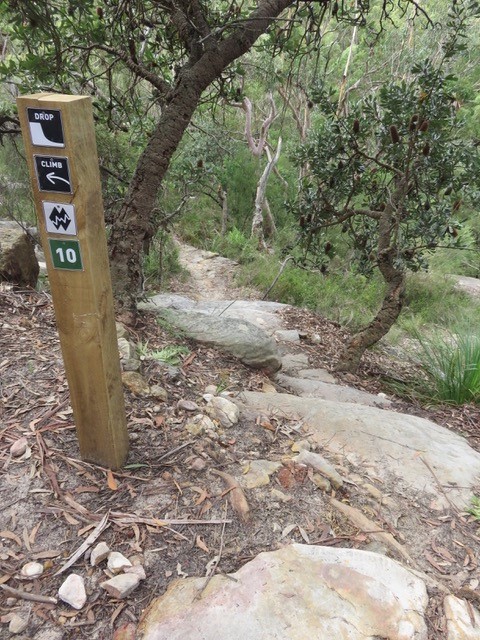 This strategy has taken many months to finalise after extensive consultation was undertaken with interested groups, often with competing interests.
This strategy has taken many months to finalise after extensive consultation was undertaken with interested groups, often with competing interests.
STEP’s main interest is the Warrimoo downhill mountain bike track in St Ives. We have written about this many times (STEP Matters 181 and 188). It was built illegally back in the early 2000s.
Council closed the track in 2016 because it went through a coastal upland swamp, a vegetation community that was declared to be an endangered ecological community in 2012. The track also went through areas that are habitat for endangered wildlife such as the Eastern Pigmy-possum and Rosenberg’s Goanna. Nevertheless, the mountain bikers ignored or removed the barriers and carried on regardless.
Council resolved the situation by deciding to create an official track covering some of the existing track but changing the route so that it was well away from the upland swamp. This is a single downhill track (pretty scary) and a separate track for the return uphill. There is still stage 2 to do to investigate completing the loop for the return uphill and provide access for walkers. This project will be subject to approval from Crown Lands and an environmental impact assessment.
A volunteer Trailcare group, the Moo Volunteers has been appointed to assist with the construction planning and maintenance.
A visit to the site in March 2020 revealed that it was already in use but some signage is still needed.
The strategy also plans the following actions where improvement is badly needed:
- Establish and manage an environmental advisory group, with representatives from Council, the community and environment groups, to provide advice on environmental issues and opportunities in relation to recreation in natural areas and to assist Council in promoting responsible and sustainable recreation in the region.
- In collaboration with recreation user groups, develop codes of conduct for endorsed recreation activities in Ku-ring-gai’s natural areas, as well as dog walking and horse riding, to facilitate responsible and safe user behaviour and practices and to reduce conflict between recreation user groups and individuals. Codes of conduct will guide users to partake in recreation in natural areas in a socially and environmentally sustainable way.
- Reduce the incidence and impacts of unauthorised bicycle track construction through proactive management and stakeholder engagement – this activity is rife – we need to keep an eye out for these illegal tracks and shortcuts. In some cases, Council will pursue prosecution for unauthorised clearing or environmental harm.
- Improve directional signage and interpretative information about recreation areas on location and on Council’s website.
Planning for Bushfires – the Urban Perspective
Sydney escaped the extreme bushfire experiences of last summer but the heatwaves, strong winds and extremely dry bush conditions could easily have caused a major fire. After all the experiences of 1987, 1994 and 2001–02 demonstrate what can happen.
Bushfire preparation has been extensively upgraded by the Rural Fire Service and local councils. The following information has been provided by Ku-ring-gai Council’s Bushfire Technical Officer, Heath Fitzsimmons. He has now moved to the Central Coast so his position is vacant.
The authorities cannot possibly provide all the protection that property owners need from bushfire. People living near bushland have a responsibility to maintain their own properties to minimise the fuel load and vulnerability of their houses. Maintaining means regular clearing the roof and gutters, ensuring there are no wood piles or flammable gardens etc. Maintenance could also mean upgrading doors, windows etc to safer options).
Even so it is important not to overestimate the level of protection that a fire break or hazard reduction burn can provide. Experience with recent fires such as in Paradise California has shown that homes far from the fire front are at great risk from ember attack.
There is also the issue of whether property owners next to bushland are able to do any clearing of an Asset Protection Zone in bushland next to their boundary if the vegetation and debris has built up to be a fire hazard and Council or National Parks have not been able to do any clearing in recent times.
STEP developed the STEP Method of Selective Hand Clearing to be used for this purpose some 40 years ago but the legality of its application on Council or National Park land is not clear. If Council and National Parks are able to adopt a policy whereby qualified homeowners are able to be permitted to hazard reduce in land adjacent to their properties then STEP would of course support that. A natural extension of that would be permitting approved commercial bush regeneration firms to carry out such hazard reduction work at the homeowner's cost should they so propose.
When Ku-ring-gai Council has appointed a new bushfire officer STEP will hope to discuss this issue further and organise a talk prior to the next bushfire season, COVID-19 restrictions permitting.
Information from Ku-ring-gai Council
Planning and coordination of bush fire hazard reduction works
Bush fire hazard reduction works in the Ku-ring-gai Area are planned by the Hornsby Ku-ring-gai Bush Fire Risk Management Committee (BFMC), comprised of representatives from Ku-ring-gai and Hornsby Councils, NSW Rural Fire Service, NSW Fire and Rescue, NSW National Parks and Wildlife Service and other land managers, emergency services and utility managers.
Every 5 years the BFMC develops a Hornsby Ku-ring-gai Bush Fire Risk Management Plan (BFRMP), Risk Assessment Table and Asset and Treatment Table. These documents identify the ‘assets’ within the district, categorise those assets based on the level of bush fire risk faced and set out a broad 5-year plan for prioritised bush fire risk management works including hazard reduction burning, fire break and fire trail maintenance, and community engagement. From this broad plan the BFMC develops an annual works program.
A list of the hazard reduction burns on the current works program for the Ku-ring-gai area and maps of the proposed burn areas can be found toward the bottom of the bush fireplans and policies page of Council’s website. As these burns are scheduled (up to a week in advance) they will appear on the hazard reduction section of the NSW RFS website, and will also be published on Council’s Twitter and Facebook pages. Past fire history including both hazard reduction burns and bush fires can be viewed on Council’s web map.
Bush fire protection measures and effective risk management treatments
When considering the bush fire risk faced by a home it is most important to consider two major methods of bush fire attack; radiant heat and ember attack. Direct ignition from radiant heat/flame contact accounts for less than 15% of the houses lost to bush fire, while the overwhelming majority (approximately 85%) of losses are due primarily to ember attack. The two also have a cumulative effect, with houses exposed simultaneously to both radiant heat and ember attack at greatest risk.
The threat posed by radiant heat is very effectively reduced by establishing an Asset Protection Zone (APZ), i.e. increasing the separation distance between buildings and bush fire prone vegetation. The separation distance required ranges from 10 to 100 m depending on slope, vegetation type, and the nature of the asset. Council maintains more than 22km of fire breaks on public land in locations where APZs cannot be accommodated within private property boundaries. Where APZs can be accommodated within private property boundaries it is the responsibility of private property owners to manage these areas.
It is important to note that even the largest APZ provides a negligible reduction in the risk posed by ember attack and the only effective way to increase a home’s resilience to ember attack is through upgrading and effectively maintaining the building and immediate surrounding area. It is also critical that people living in bush fire prone areas recognise that there can be no guarantee that even buildings constructed to the absolute highest standards will be defendable or able to provide a safe refuge during a bush fire, and often the only safe option is to leave early, before a fire even starts. No buildings are designed to withstand a bush fire during Catastrophic Fire Danger Rating conditions, and many older buildings and subdivisions were not designed to withstand bush fire at even the lower Fire Danger Ratings.
Hazard reduction burning is an important aspect of an effective bush fire risk management plan, but does not provide long term protection from the threat of bush fire on its own. Rather, it is intended to complement other bush fire protection measures such as ember protection and APZs. More specifically, the purpose of hazard reduction burning is to:
- Provide fuel reduced areas which enable the protection of assets by firefighters when APZs are not in place,
- Complement APZs where these do not provide adequate protection,
- Provide strategically located fuel reduced areas to reduce the potential for large wildfires to develop,
- Provide areas where fire can more easily be suppressed, or
- Provide strategically located fuel reduced areas to reduce vulnerability of assets which are susceptible to fire.
A range of environmental considerations must be taken into account when planning hazard reduction activities, and for information on this see Guidelines for Ecologically Sustainable Fire Management and Bush Fire Environmental Assessment Code. A key concept of these guidelines is that of an appropriate fire interval – the minimum and maximum length of time between fires necessary to maintain ecosystem functions. Recommended fire intervals vary depending on vegetation type, with the minimum intervals applicable to Ku-ring-gai ranging from 5 years for dry ridgetop vegetation to 25 years for wet eucalypt forests.
The final critical component of an effective bush fire risk management plan is community engagement. Ku-ring-gai Council, in consultation with emergency management agencies and government, has developed the award-winning Climate Wise Communities initiative to actively engage with individuals and communities and assist in increasing the resilience of their homes and neighbourhoods to extreme weather events including bush fire. Through this program we partner with other councils, emergency services, non-government organisations and community groups to provide workshops, tools and access to experts for ‘at risk’ community members.
You may also find some useful information at the following links:
- Climate Wise Communities Ready Check – An online tool developed by Council to help you understand your risk from bush fire and other extreme weather events, and the first step in creating a survival plan.
- Bush Fire Survival Plan – A guide from the RFS to help you and your family create an all-important survival plan.
- NSW RFS Standards for Asset Protection Zones – Includes recommendations on landscaping and vegetation management.
- Building Best Practice Guide: Upgrade of Existing Buildings – Upgrades you can make to your home’s building elements to improve bush fire resilience.
- Water Smart and Energy Smart rebates – some applicable to bush fire protection, including up to $1000 for water tanks and up to $500 for external window shutters.
- 10/50 Vegetation Clearing Code – Some information on the sort of vegetation clearing you may be allowed to carry out on your property without Council consent.
One final link I want to include is the Overall fuel hazard assessment guide 4th ed. This is the industry standard method of assessing bushfire fuel hazard and is used to inform bushfire behaviour models and help plan hazard reduction activities.
Fudging About Emissions Figures Denies the Government the Credibility it Must Claim on the Global Stage
Optimistic, prosperous – a country of rare beauty, blessed with abundant natural resources. Australia has all the ‘golden eggs’ ’needed to position itself as a global leader, to help its Asia-Pacific region leapfrog to a new energy future and to guarantee its prosperity in the process.
Watching this summer’s unprecedented firestorms, I was heartbroken by the sheer scale of the human and ecological tragedy. ‘This must be the tipping point on climate politics in Australia,’ I said to myself. ‘Surely now the politicians will join hands and forge a bipartisan plan for a better future.’
Instead, the climate wars have returned, driven by a handful of deniers given air by powerful media sympathisers and a Prime Minister unwilling to fully embrace the science and stare them down.
For Australia, the choice between danger and opportunity is clear, and that choice must be made now. Since the 2008 Stern Review, the world has known that the cost of not acting is much greater than the cost of our current path. And since the 2008 Garnaut Review, Australians have known that without stronger action, droughts and bushfires would become more frequent and intense, and ‘observable by 2020’. It is time to move on from denial, delusion and delay towards preparedness, productivity and prosperity.
The following three steps will put Australia on track to the future we must create. First, be honest about where Australia is at. Your country is much more than 1.3% of the global climate problem. Carbon emissions from Australia’s use and export of fossil fuels account for about 5% of the global fossil fuel footprint. With exports included, Australians have the biggest per capita carbon footprint in the world.
Australia is not ‘meeting and beating’ its emissions targets. Emissions have increased in every calendar year since 2014. The government’s own projections say Australia will reduce emissions by only 16% by 2030, not the 26 to 28% it promised in Paris, nor the 50% required by science to limit warming to 1.5 degrees.
Kyoto ‘carryover’ can’t be used to make up the gap. The Paris Agreement doesn’t allow it. To suggest otherwise is at best an attempt to paper over Australia’s lagging efforts and at worst a legally baseless ploy that encourages cheating and holds back the next phase of carbon markets.
A highly vulnerable Australia cannot address climate change on its own, but its heel-dragging leaves it without the international credibility to drive a stronger global response.
The Australian government must look seriously at how to truly meet and beat its 2030 target, and it must ask other major emitters to join it in an alliance for higher ambition at the COP26 climate summit in Glasgow this November.
Second, Australia needs a bipartisan, long-term vision for decarbonisation. Rattled by the bushfires and growing evidence of climate-related risks and stresses, Australia’s biggest corporations – including Rio Tinto, Qantas, Telstra and BHP – have announced support for a national net zero target for 2050. For them, legislating this target is important to finally end the climate wars and provide certainty to underpin investment in the transition.
All states and territories have 2050 net zero targets, as do 73 other nations, including Britain and Canada. British Prime Minister Boris Johnson would welcome Australia joining these ranks ahead of the COP26 and giving consideration to the British model of using an independent expert body to advise government on five-yearly carbon budgets en route to net zero by 2050.
Independent MP Zali Steggall’s private members’ bill does exactly that.
Third, Australia must embrace net zero by 2050 as a central pillar of its economic plan for the future. The plan must prioritise the policies, industries and technologies that are scientifically aligned with the 1.5 degree temperature limit, and retire those that are not. Despite a booming renewables industry, coal still accounts for around 60% of Australia’s energy mix. But the technology is tired and unreliable in the summer, highly polluting, and no longer price-competitive with solar and wind. There is no place for governments signed up to the Paris Agreement to provide subsidies for dying coal. We must instead invest in the future.
After two years in operation, South Australia’s 100 megawatt ‘big battery’ at Hornsdale has successfully stabilised the state’s grid, saved consumers $50 million and produced handsome financial returns for its investors. In NSW, the Snowy 2.0 hydro project will deliver at least two gigawatts of dispatchable power to the main Australian grid, creating up to 5000 jobs along the way.
These ground-breaking projects are examples of how Australia can lead and prosper. With political honesty and vision, ambitious targets and a stubborn commitment to innovation, Australia stands ready to assume its rightful place as a clean energy superpower.
This article was published in the Sydney Morning Herald on 9 March 2020 and is republished with permission of the author Christiana Figueres. Christiana is a former UN Executive Secretary for Climate Change and the co-author of The Future We Choose
Development of a Plastic Waste Strategy
China decided two years ago to ban the importof plastics for recycling and several SE Asian countries have limited imports. This has forced governments to think of new ways of dealing with the growing pile of plastic waste. The mindset of out-of-sight-out-of-mind has to change.
Current waste generation statistics
According to the National Waste Report 2018 by Blue Environment Pty Ltd, prepared for the Department of Environment and Energy in 2016–17, Australia generated an estimated 54 million tonnes (Mt) of waste including:
- 17.1 Mt of masonry materials
- 14.2 Mt of organics
- 6.3 Mt of hazardous waste (mainly contaminated soil)
- 5.6 Mt of paper and cardboard
- 5.5 Mt of metals
This comprised 13.8 Mt (560 kg per capita) of municipal solid waste from households and local government activities, 20.4 Mt from the commercial and industrial sector and 20.4 Mt from the construction and demolition.
Although waste per person is going down, Australia’s population is growing so more volume is being generated.
Recycling rates are highest for metal: 90% is successfully reused (mostly overseas). Masonry materials have a recycling rate of 72%, followed by paper and cardboard (60%), glass (57%), organics (52%) and hazardous waste (27%).
The report makes a telling point about the lack of recycling of mobile phones and computers:
Some toxic metals, such as cadmium and cobalt, and rare and precious metals, such as gold and palladium, are still being landfilled in composite material products such as electronic waste. The tonnages are low but the potential environmental impacts and value of the lost resources are high.
Only 12% of plastic is recycled. Nationally we use 3.3 bn plastic bags, 2.6 bn coffee cups, 2.4 bn plastic straws and 1.3 bn plastic bottles each year. In total each person generates about 103 kg of plastic each year.
In August a meeting of environment ministers agreed to a ban on the export of waste glass, plastic, paper and tyres that will be phased in from mid-2020 after they agreed to a timetable for changes in the way Australia deals with recyclable material. The export of waste glass will be banned by July 2020, followed by mixed plastics by July 2021, whole tyres by December 2021 and all remaining waste products, including paper and cardboard, by no later than mid-2022. It has finally been recognised that we should be responsible for our waste generation and it is a resource that is valuable.
The plastic waste problem
The most difficult issue is plastics. A National Plastics Summit was held on 2 March with 200 participants from government, industry and the community.
The meeting agreed to 2025 National Packaging Targets:
- 100% reusable, recyclable or compostable packaging
- 70% of plastic packaging being recycled or composted
- 30% of average recycled content included in packaging
- phasing out of problematic and unnecessary single-use plastics packaging
Several manufacturers made pledges to introduce new measures to reduce or reuse plastic. Most significant was the pledge by the Pact Group, the largest manufacturer of rigid plastic packaging in Australasia, to invest $500 million in research and facilities to include 30% recycled content in their products by 2025 and keep 2 billion plastic containers out of landfill. McDonalds pledged to phase our plastic cutlery and straws by the end of 2020.
New technologies for reusing plastics
New technologies are being developed all the time so hopefully we won’t resort to the huge waste to energy incineration plant in Eastern Creek in western Sydney that has yet to be approved. The application for approval was refused in 2018 based on advice from the EPA, NSW Health and the independent experts that the air quality impacts and risk to human health of the proposal are unknown.
One example of new technologies that has huge potential was profiled on ABC’s 7.30 Report.
The patented Catalytic Hydrothermal Reactor (Cat-HTR) technology is a circular solution to problem plastic. The Cat-HTR is able to chemically recycle mixed plastics without separating different plastic types, including end-of-life plastic that would otherwise be sent to landfill, incineration or end up in our oceans. The oil created from the process can be refined into fuels and chemicals, including the chemicals to make new plastics.
There is a pilot plant operating in Somersby on the Central Coast but operation on a commercial scale is some way off. The first such plant is being built in the UK.
Local council plans
Hornsby Council updated their waste strategy early this year.
Ku-ring-gai Council decided at the March meeting to adopt a new waste strategy. Some of the major changes to the current services relate to the bulky clean-up and green waste services. A pleasing development is a plan to introduce waste recovery at the kerbside for e-waste, mattresses and metals. Currently there are organisations that will collect and recycle the components of the mattresses but they are not free. Surely the two councils could coordinate collection of large items like mattresses so we no longer see them sitting forlornly by the roadside in the rain.
We look forward to receiving details of timing of implementation.
Click here for recycling locations for specific items such as printer cartridges and mobile phones.
Post-fire Re-growth
This article is based on recent visits by John Martyn to two different burnt areas, the Blue Mountains and the Mitchell Crescent side of Twin Creeks Reserve and is a summary only of a complex situation: of course we must await and monitor the long-term consequences.
The southern edge of the Gospers Mountain megablaze complex impinged on Blackheath, but a spring hazard reduction burn of the bushland south-west of Mitchell Oval, Turramurra, gave those of us living downwind of it a feeling of security whilst watching the January carnage elsewhere on ABC TV. Regrowth by coppicing, sprouting from tuberous rootstock and germination is obviously time related, and is relatively advanced at Mitchell Crescent, but is widespread too in the Blue Mountains after relatively few weeks. The article is illustrated with a small selection from numerous pictures.
Blue Mountains
We stayed in Blackheath over the weekend of 8 February (talk about a ‘wet weekend’ probably the wettest in recent history). Torrential rain and gale force winds made observations difficult, but from glimpses through the fog it was apparent that fire intensity in the Grose Valley was strongly variable and slope related. The canopy in the valley bottom was widely unburnt even though the ground flora and understory were brown and charred. Some eucalypt canopies were even in flower though it was hard to tell what species through the mist.
The wooded rocky slopes, cliffs and ridge crests were completely charred, however. Trees on ridge crests are generally shorter, and coupled with high fire intensity burning uphill, most canopies didn't survive. Many such trees however were bursting with epicormic shoots, and the charcoal-strewn ground was peppered with green shoots of rushes and sedges, even some grasses. Most if not all of the numerous tree ferns at Govetts Leap were bursting with lush new green crosiers (pictured) and some ground ferns like gristle fern were also flush with new leaves from their underground rhizomes.
Mitchell Oval ridge
This local hazard reduction burn left large areas of canopy untouched so total loss of foliage was restricted to shrubs and small trees, plus ferns and ground flora. In the broad sense, eucalypts were relatively unaffected, and short species that did get burnt, like dwarf apple Angophora hispida, are mostly bursting with new growth.
Many Proteaceae species have coppiced or re-shooted. We saw banksias B. oblongifolia and B. spinulosa coppicing readily while one large B. serrata was flush with epicormic shoots. Other proteoid re-sprouters were mountain devil Lambertia formosa and crinkle bush Lomatia silaiifolia.
The fire was limited by the northern valley track downhill from the bottom of Mitchell Crescent, but singed the edge of the valley rainforest and riparian understory. Young specimens of coachwood Ceratopetalum apetalum, white cherry Schizomeria ovata and scentless rosewood Synoum glandulosum show flourishing coppicing. The two other main rainforest species of the valley, Lillypilly Acmena smithii and sassafras Doryphora sassafras were out of reach of the fire, as were most grey myrtles Backhousia myrtifolia. Essentially riparian species like black wattle Callicoma serratifolia have coppiced strongly where burned.
Some surprises maybe, maybe not: the pea flower Platylobium formosum was seen re-shooting, as was one black sheoak Allocasuarina littoralis too.
Ferns like rainbow fern Calochlaena dubia and gristle fern Blechnum cartilagineum have widely recovered, and there are many pinnate seedlings of unknown wattle species plus twiners like Hardenbergia violaceae. The latter will create carpets of purple in a couple of years’ time, perhaps with a sprinkling of ground orchids in season.
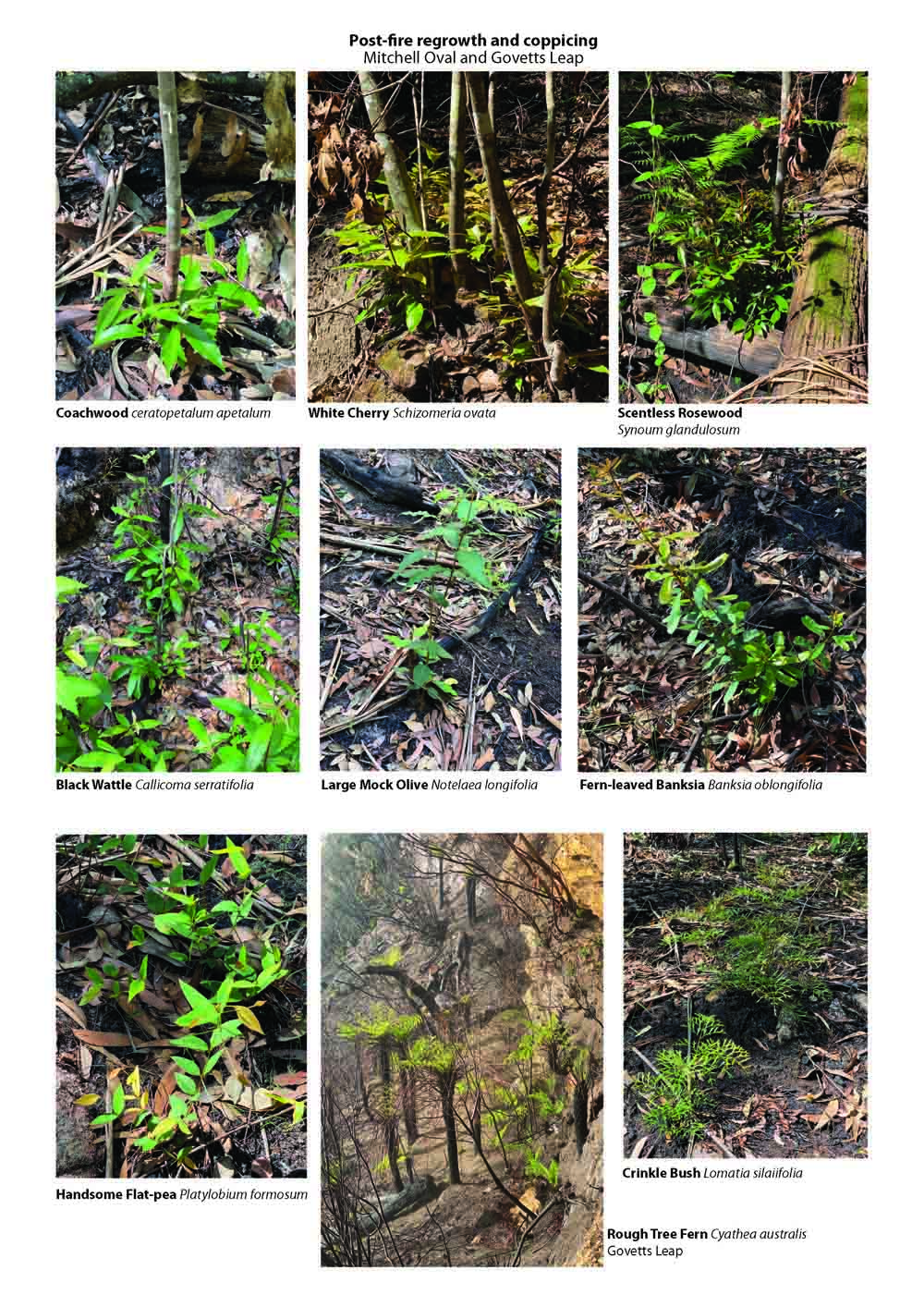
Pulling Out Weeds is the Best thing you Can do to Help Nature Recover
Many Australians feel compelled to help our damaged wildlife after this season’s terrible bushfires. Suggested actions have included donating money, leaving water out for thirsty animals, and learning how to help the injured. But there is an equally, if not more, important way to assist: weeding.
An army of volunteers is needed to help land owners with judicious weed removal. This will help burnt habitats recover more quickly, providing expanded, healthy habitat for native fauna.
Other emergency responses, such as culling feral animals and dropping emergency food from aeroplanes, are obviously jobs for specialists. But volunteer weeding does not require any prior expertise – just a willingness to get your hands dirty and take your lead from those in the know.
The recent bushfires burned many areas in national parks and reserves which were infested with weeds. Some weeds are killed in a blaze, but fire also stimulates their seed banks to germinate.
Weed seedlings will spring up en masse and establish dense stands that out-compete native plants by blocking access to sunlight. Native seedlings will die without setting seed, wasting this chance for them to recover and to provide habitat for a diverse range of native species.
Read more: Many of our plants and animals have adapted to fires, but now the fires are changing
This mass weed germination is also an opportunity to improve the outlook for biodiversity. With a coordinated volunteer effort, these weeds can be taken out before they seed – leaving only a residual seed bank with no adult weeds to create more seed and creating space for native plants to flourish.
With follow-up weeding, we can leave our national parks and reserves – and even bushland on farms - in a better state than they were before the fires.
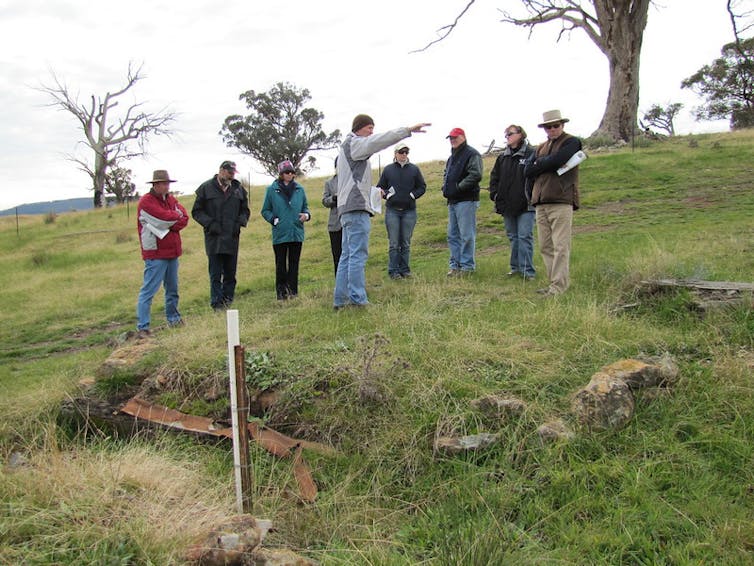
Weeding works
In January 1994, fire burned most of Lane Cove National Park in Sydney. Within a few months of the fire, volunteer bush regeneration groups were set up to help tackle regenerating weeds.
Their efforts eradicated weeds from areas where the problem previously seemed intractable and prevented further weed expansion. Key to success in this case was the provision of funding for coordination, an engaged community which produced passionate volunteers and enough resources to train them.
Read more: Conservation scientists are grieving after the bushfires -- but we must not give up
Following recent fires in the Victorian high country, volunteers will be critical to controlling weeds, particularly broom (Scotch broom and related species), which occurs throughout fire-affected areas .
Fire typically kills these woody shrubs but also stimulates seed germination. Without intervention, broom will form dense stands which out-compete native plant species .
However, swift action now can prevent this. Mass germination reduces the broom’s seedbank to as low as 8% of pre-fire levels, and around half of the remaining seeds die each year. Further, broom usually takes three years to flower and replenish its seedbank. So with no new seeds being produced and the seedbank low and shrinking, this three-year window offers an important opportunity to restore previously infested areas.
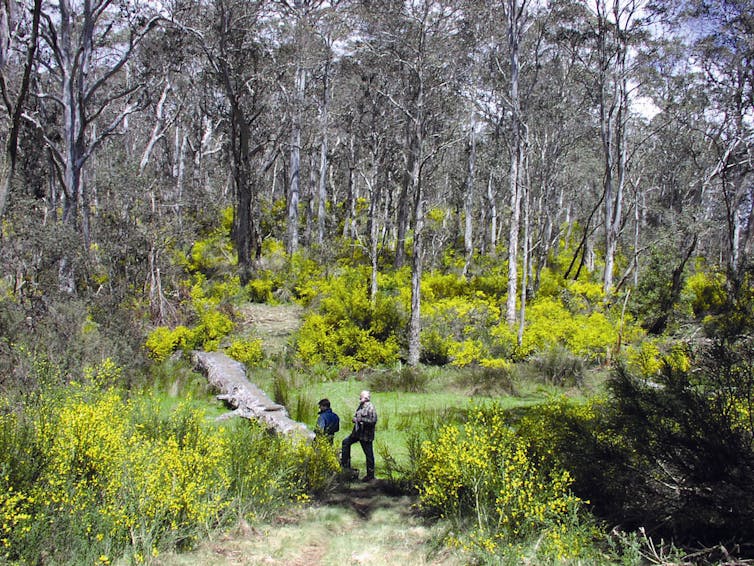
Parks Victoria took up this opportunity after the 2003 fires in the Alpine National Park. They rallied agencies, natural resource management groups and local landholders to sweep up broom . Herbicide trials at that time revealed that to get the best outcome for their money, it was critical to spray broom seedlings early, within the first year and a half.
Broom management also needs to use a range of approaches, including using volunteers to spread a biological control agent.
Plenty of work to do
Parks Victoria continue to engage community groups in park management and will coordinate fire response actions when parks are safe to enter. Similar programs can be found in New South Wales, Western Australia, South Australia, Queensland, Tasmania, the Northern Territory, and the ACT.
A wide range of weeds expand after fire and warrant a rapid response. They include lantana, bitou bush, and blackberry.
Read more: Yes, native plants can flourish after bushfire. But there’s only so much hardship they can take
Managing weeds after fire is currently a high priority at many sites. At the edges of the World Heritage Gondwana rainforests of southwest Queensland and northern and central NSW, there is a window to more effectively control lantana. In many forested areas in NSW, Victoria and South Australia, fire has created an opportunity to address important weed problems.
State government agencies have the mapping capacity to locate these places. Hopefully they can make these resources easy for the public to access soon, so community groups can self-organise and connect with park managers.
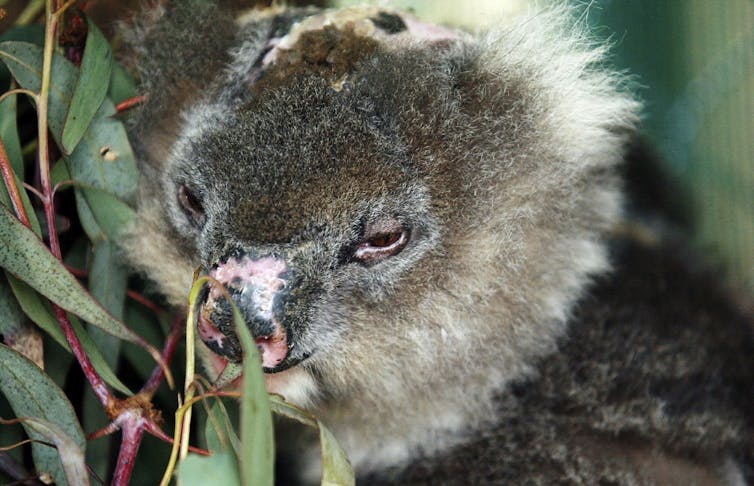
All this needs money
Emergency funding is now essential to enable community-based weed control programs at the scale needed to have a substantial impact. Specifically, funding is needed for group coordinators, trainers and equipment.
While emergency work is needed to control regenerating weeds in the next 6-18 months, ongoing work is needed after that to consolidate success and prevent reinfestations from the small, but still present, seed bank.
Ongoing government funding is needed to enable this work, and prepare for a similar response to the next mega-fires.
Want to act immediately?
You can volunteer to do your bit for fire recovery right now. In addition to state-agency volunteer websites, there are many existing park care, bush care and “friends of” groups coordinated by local governments. They’re waiting for you to join so they can start planning the restoration task in fire-affected areas.
Contact them directly or register your interest with the Australian Association of Bush Regenerators who can link you with the appropriate organisations.
Read more: You can leave water out for wildlife without attracting mosquitoes, if you take a few precautions
If we do nothing now, the quality of our national parks will decline as weeds take over and native species are lost. But if you channel your fire-response energy and commitment to help manage weeds, our national parks could come out in front from this climate-change induced calamity.
By all means, rescue an injured koala. But by pulling out weeds, you could also help rescue a whole ecosystem.
Dr Tein McDonald, president of the Australian Association of Bush Regenerators, contributed to this article.![]()
Don Driscoll, Professor in Terrestrial Ecology, Deakin University
This article is republished from The Conversation under a Creative Commons license. Read the original article.
Snowy Hydro Must Not be Rubber Stamped
NPA NSW has released a new research paper that has found that the claimed benefits of the Snowy 2.0 project are overstated or false.
Several environmental groups have signed an open letter to the Ministers of Planning and Environment appealing to them to reject the environmental impact statement for the main works that will be the first stage of the Snowy Hydro pumped storage project. Several contracts for the project have already been awarded before the EIS has been assessed.
A group of 30 experts also sent a letter to the prime minister and premier calling for a comprehensive review of the project and alternatives.
Politicians are acting as if the project is a fait accompli. The media is not giving any attention to the issues that have been raised. We need to send emails to the ministers so the issue cannot be forgotten.
John Martyn Research Grant Award for 2020
We are pleased to announce that the John Martyn Research Grant for 2020 has been awarded to Ruby Paroissien.
Ruby is currently undertaking her honours at UNSW, studying the effects of fire seasonality on seed ecology, a particularly important topic given the current climate. Her current focus is on Doryanthes excelsa (Gymea lily), a post-fire flowerer endemic to NSW and at risk to changes in fire regimes.
She holds both a Bachelor of Fine Arts and a Bachelor of Science giving her a unique perspective to understanding dynamics in nature. Prior to this year Ruby has spent her time volunteering alongside Mark Ooi among other scientists, to work on a variety of research projects. Last year she completed a summer research scholarship, which lead her to develop a paper on the rare flannel flower Actinotus forsythii.
The grant winner for 2019, Gabby Hoban has had to defer her project but we expect to hear all about her project later this year.
Postscript
Ruby's research was published in Environmental and Experimental Botany, vol 192, Dec 2021, 104634. You can also download a PDF of the paper, Effects of fire season on the reproductive success of the post-fire flowerer Doryanthes excelsa.


